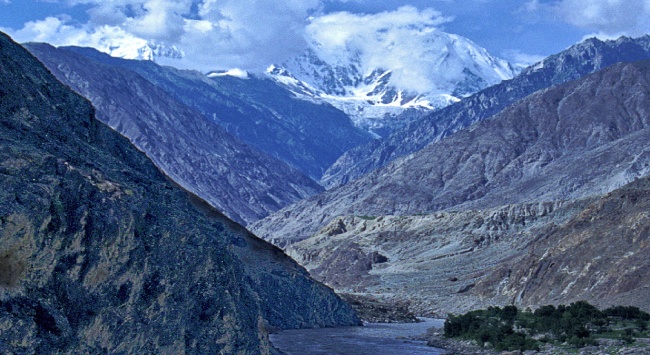Summary
The Indus Waters Treaty has withstood wars, military standoffs and decades of political tension between India and Pakistan. However, India’s recent decision to place the treaty in ‘abeyance’ – pending the fulfillment of certain conditions – signals that the treaty’s days are almost over.
On 22 April 2025, militants belonging to The Resistance Front, an offshoot of the Lashkar-e-Taiba, killed 26 and injured about 17 tourists in Pahalgam in Jammu & Kashmir (J&K). India responded with several strong measures against Pakistan, including the decision to hold the Indus Waters Treaty (IWT) “… in abeyance with immediate effect, until Pakistan credibly and irrevocably abjures its support for cross-border terrorism”. Pakistan responded with its own measures against India. On India’s decision on the IWT, Pakistan countered, “…Water is a Vital National Interest of Pakistan, a lifeline for its 240 million people, and its availability will be safeguarded at all costs. Any attempt to stop or divert the flow of water belonging to Pakistan as per the Indus Waters Treaty and the usurpation of the rights of lower riparian will be considered as an Act of War and responded with full force across the complete spectrum of National Power.”
Consequent to its decision, India is now not obliged to abide by the terms of the IWT – it can stop sharing water flow data with Pakistan, flush reservoirs and no longer be subject to hydro project design or operation-related restrictions. Annually, on an average, around 135 million acres feet (MAF) of water flow in the western rivers – Indus, Jhelum and Chenab. The IWT allows India to store 3.60 MAF (current capacity is around one MAF), develop 1.34 million acres of irrigation land in J&K and Ladakh (as of 2024, the total irrigated land was around 642,000 acres) and build run-of-river dams. India uses a little more than 90 per cent of its share of water from the three eastern rivers – Sutlej, Beas and Ravi. As India does not have the required large hydro infrastructure, there will be no immediate impact on Pakistan. It may take more than a decade time to build hydro infrastructure projects which may adversely impact Pakistan, where per capita water availability has declined to 800 cubic metres.
Signed by the then Indian Prime Minister Jawaharlal Nehru and Pakistan’s General Ayub Khan, then head of the state, in September 1960, the IWT was geared at sharing waters from common rivers. The World Bank is also a party to the IWT, with W A B Iliff, then Vice-President of the Bank, putting his signature for the purposes specified in Articles V and X and Annexures F, G and H of the treaty. Notably, in the present instant, the World Bank has not been informed about suspension of the IWT.
Since 1960 , the IWT has survived three wars (1965, 1971 and 1999) and multiple political and military tensions between India and Pakistan. Under the Narendra Modi-led Indian government, the treaty has been closely linked with India’s security matters. Earlier, after the killing of Indian soldiers by militants in 2016 in Uri in J&K, Modi stated, “Blood and water cannot flow together”. In 2019, after another militant attack by a suicide bomber on the Central Reserve Police Force convoy in Pulwama in which 40 paramilitary soldiers were killed, then Indian Union Minister of Water Resources, Nitin Gadkari, said that the government had decided to stop its share of water from the eastern rivers flowing into Pakistan. In January 2023, under Article XII (3), India issued a notice to Pakistan seeking modifications in the IWT and followed up with four letters between January 2023 and September 2024 to initiate talks to revise and modify the treaty. However, it did not receive an appropriate reply.
A key debate is on the unilateral abrogation of the IWT. Article XII (4) of the IWT states that the IWT “shall continue in force until terminated by a duly ratified treaty concluded for that purpose between the two governments”. As there is no explicit clause in the IWT detailing its abrogation, Indian policymakers often argue that the provisions under Article 62 of the Vienna Convention on the Law of Treaties can be used to revoke the treaty.
Although India has not used the word ‘abrogation’, the conditions it has attached when suspending the IWT implicitly convey that it is almost an end to the treaty or as what Pradeep Kumar Saxena, India’s former Indus Water Commissioner, said, it “…could be the first step towards the abrogation of the Treaty, if the government so decides”. Even if India unilaterally abrogates the IWT, Pakistan has little choice. In 2016, Ahmer Bilal Soofi, a former federal law minister of Pakistan, speaking to Dawn, said, “In case India ‘revokes’ the treaty…Pakistan will not be left with any peaceful mechanism for seeking performance of the treaty by India”.
Despite repeated complaints from both India and Pakistan regarding its inefficacy to serve their respective interests , the IWT has tried to serve as a platform to address their technical water-related grievances. However, the rise of hyper-water nationalism, coupled with escalating multifaceted tensions, now threatens to dismantle what has been regarded as one of the last remaining symbols of cooperation between the nuclear-armed South Asian rivals.
. . . . .
Dr Amit Ranjan is a Research Fellow at the Institute of South Asian Studies (ISAS), an autonomous research institute at the National University of Singapore (NUS). He can be contacted at isasar@nus.edu.sg. The author bears full responsibility for the facts cited and opinions expressed in this paper.
Pic Credit: Wikipedia
-
 More From :
More From :
-
 Tags :
Tags :
-
 Download PDF
Download PDF


